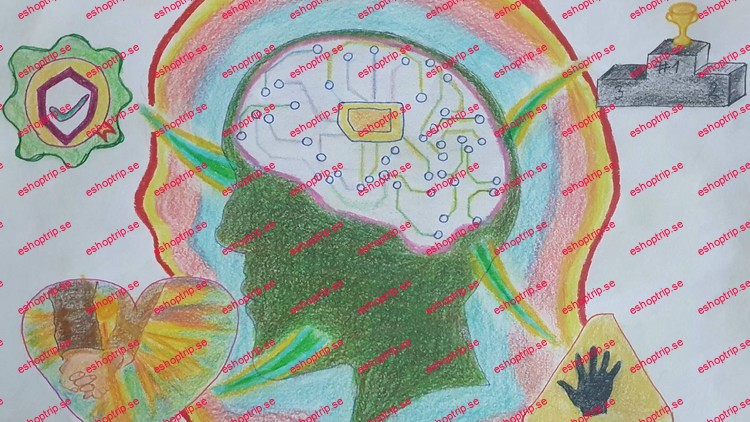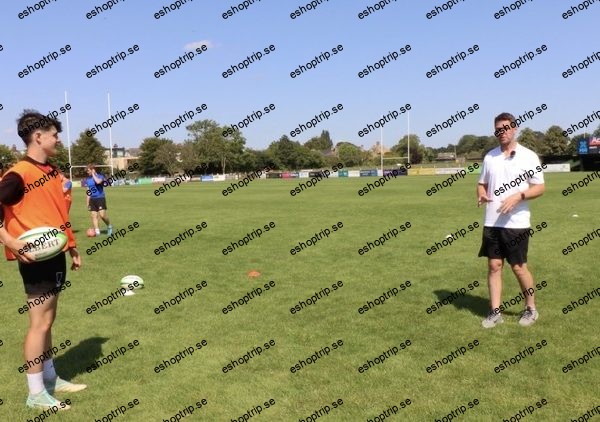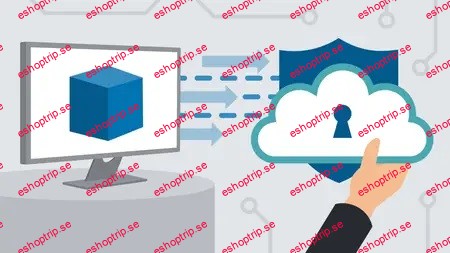Published 9/2024
MP4 | Video: h264, 1920×1080 | Audio: AAC, 44.1 KHz
Language: English | Size: 10.7 GB | Duration: 13h 35m
Improve your parenting, counselling skills and find out how people became what they are
What you’ll learn
Basic concepts of schema therapy-What are schemas, how those manifest and Schema therapy as a model
Chapters 1-5-Detailed descriptions of domains, schemas their differences, correlations and ways to overcome EMS (early maladaptive schemas)
Chapter 6-Become people scanner, recognize their modes, schemas and practice…a lot
Chapter 7- Coping mechanisms and modes (of child, parent and adult) with a help of sheets and mind maps
Chapter 8-Techniques and toolbox-Complete practical, hands on guide on how to apply techniques for your own growth and in therapy as mental health professional
Chapter 9-Genogram work in schema therapy-discover your family patterns, learn how to mitigate negative ones and stop it. How to find schemas and origins
Chapter 10-Cultural, family, environment, gender influences on schemas, future of schema therapy and basic concepts of parenting according to Schema therapy
Requirements
Being interested in psychology, know some basic concepts of psychology and psychotherapy and using English actively on functional level, so you can understand course.
Description
Schema therapy Complete Guide (Fully Accredited)Improve your parenting, counselling skills and find out how people became what they areWhat will students learn in your course?Basic concepts of schema therapy-What are schemas, how those manifest and Schema therapy as a modelChapters 1-5-Detailed descriptions of domains, schemas their differences, correlations and ways to overcome EMS (early maladaptive schemas)Chapter 6-Become people scanner, recognize their modes, schemas and practice…a lotChapter 7- Coping mechanisms and modes (of child, parent and adult) with a help of sheets and mind mapsChapter 8-Techniques and toolbox-Complete practical, hands on guide on how to apply techniques for your own growth and in therapy as mental health professionalChapter 9-Genogram work in schema therapy-discover your family patterns, learn how to mitigate negative ones and stop it. How to find schemas and originsChapter 10-PracticumIf you are being interested in psychology, from early age, there is a reason for it. You had complex family and it helped you understand people, society and relationship dynamics. This is course is ideal for:People interested in pursuing career as counsellor, psychologist, mental health professional or coach.Students of psychiatry, psychology, mental health, social work, pedagogy and similar social-humanistic field of sciencePsychotherapists, coaches who are willing to invest time and work into expanding their working therapeutic model, shift their paradigms and learn new tips and tricks of therapy as craftPeople who are currently in therapy and want to expand their knowledge and practical skillsHR people, parents, philosophers, writers, managers and everyone working with peopleThose who truly strive to understand human nature, why people behave certain way, where that came from. Those who truly want to understand human nature and origin story of every personality.This is going to be my first FULLY ACCREDITED Course. In case you want that certificate you have to pass all quizzes and do some of additional exercises. Course will be constantly upgraded so you are getting additional content for free once you buy course. It will give you wide range of techniques, very good understanding of Schema therapy as therapy model and deeper understanding of human psychology as well.
Overview
Section 1: Introduction
Lecture 1 Introduction
Lecture 2 1.2 Misconceptions about schemas
Lecture 3 1.3 Schema therapy as model hierarchy within it and questions
Section 2: Disconnection and rejection schemas
Lecture 4 1.1 Mistrust and abuse part 1
Lecture 5 1.2 Mistrust and abuse part 2
Lecture 6 2.1 Abandonment part 1
Lecture 7 2.2 Abandonment part 2
Lecture 8 3.1 Defectiveness part 1
Lecture 9 3.2 Defectiveness part 2
Lecture 10 4.1 Emotional deprivation part 1
Lecture 11 4.2 Emotional deprivation part 2
Lecture 12 5.1 Social isolation part 1
Lecture 13 5.2 Social isolation part 2
Section 3: Chapter 2- Impaired autonomy Autonomy competence and sense of identity
Lecture 14 6.1 Dependence part 1
Lecture 15 6.2 Dependence part 2
Lecture 16 7.1 Enmeshment part 1
Lecture 17 7.2 Enmeshment part 2
Lecture 18 8.1 Failure part 1
Lecture 19 8.2 Failure part 2
Lecture 20 9.1 Vulnerability part 1
Lecture 21 9.2 Vulnerability part 2
Section 4: Chapter 3- Realistic limits and self control
Lecture 22 10.1 Entitlement part 1
Lecture 23 10.2 Entitlement part 2
Lecture 24 11.1 Insufficient self control part 1
Lecture 25 11.2 Insufficient self-control part 2
Section 5: Chapter 4-Freedom to express needs and emotions
Lecture 26 12.1 Approval seeking part 1
Lecture 27 12.2 Approval seeking part 2
Lecture 28 13.1 Subjugation and self-sacrifice part 1
Lecture 29 13.2 Subjugation and self-sacrifice part 2
Section 6: Chapter 5- Over-vigilance and inhibition
Lecture 30 14.1 Emotional inhibition part 1
Lecture 31 14.1 Emotional inhibition part 2
Lecture 32 15.1 Negativity part 1
Lecture 33 15.2 Negativity part 2
Lecture 34 16.1 Punitiveness part 1
Lecture 35 16.2 Punitiveness part 2
Lecture 36 17.1 Unrelenting standards part 1
Lecture 37 17.2 Unrelenting standards 2
Section 7: Chapter 6-Schema recognition skills
Lecture 38 1 Chapter 6 disconnection and rejection case 1-1
Lecture 39 2 Chapter 6 DR case 1 part 2 + real story of domestic violence
Lecture 40 4 Chapter 6 disconnection and rejection case 2-2
Lecture 41 5 Chapter 6 disconnection and rejection case 3-1
Lecture 42 6 Chapter 6 Case of William 3-2
Lecture 43 8 Chapter 6-Domin of impaired autonomy case 1-1
Lecture 44 3 Chapter 6 disconnection and rejection case 2-1
Lecture 45 7 Chapter 6-Domain of impaired limits case 1-2
Lecture 46 9 Laura case 2 domain impaired limits part 1
Lecture 47 10 Laura part 2
Lecture 48 11 Chapter 6 impaired autonomy and performance case 3 Collin part 1
Lecture 49 12 Chapter 6 impaired autonomy and performance case 3 Collin part 2
Lecture 50 13 Chapter 6 Impaired limits Case Martha part 1
Lecture 51 14 Chapter 6 Impaired limits Case Martha part 2
Lecture 52 15 Chapter 6 Other directedness Case Mika part 1
Lecture 53 16 Chapter 6 Other directedness Case Mika part 2
Lecture 54 17 Chapter 6 Other directedness Case Inna part 1
Lecture 55 18 Chapter 6 Other directedness Case Inna part 2
Lecture 56 19 Chapter 6 Over-vigilance and Inhibition Case Peter part 1
Lecture 57 20 Chapter 6 Over-vigilance and Inhibition Case Peter part 2+recommended quiz
Section 8: Chapter 6b
Lecture 58 Chapter 6b The Unloved
Lecture 59 Chapter 6b Mozart vs Salieri
Lecture 60 Chapter 6b Good Will Hunting
Lecture 61 Chapter 6b Devil wears Prada
Section 9: Chapter 7-Modes
Lecture 62 1 Modes-Intro-What those are
Lecture 63 2 Surrender coping strategy
Lecture 64 3 Avoidance coping strategy
Lecture 65 4 Overcompensation coping strategy
Lecture 66 5 Child modes
Lecture 67 6-Parent modes
Lecture 68 7-Adult modes
Lecture 69 8 Behavioral forms of disconnection and rejection schemas
Lecture 70 9 Behavioral expressive forms of impaired autonomy and performance schemas
Lecture 71 10 Behavioral forms of impaired limits schemas
Lecture 72 11 Behavioral forms of other directedness schema
Lecture 73 12 Behavioral forms of over-vigilance and inhibition schemas
Lecture 74 13 Most frequent behavioral forms for each coping strategy
Section 10: Chapter 8-Techniques and toolbox
Lecture 75 8.1 Case conceptualization
Lecture 76 8.2 Techniques and toolbox general overview
Lecture 77 8.3 Behavioral techniques in Schema therapy
Lecture 78 8.4 Emotion focused techniques and toolbox
Lecture 79 8.5 Motivational techniques
Lecture 80 8.6 Cognitive techniques
Lecture 81 8.7 Relational techniques in Schema therapy
Section 11: Chapter 9-Genogram
Lecture 82 Genogram 1
Lecture 83 Genogram 2
Lecture 84 Genogram 3
Lecture 85 Genogram 4
Lecture 86 Genogram 5
Lecture 87 6-Misconceptions about family internal systems
Lecture 88 7-Scapegoationg part 1
Lecture 89 8-Scapegoating part 2
Lecture 90 Genogram 9
Section 12: Chapter 10-Practicum for chapters 8 and 9
Lecture 91 1-New hybrid technique instructions
Lecture 92 2- Guided imagery future pacing your goals
Lecture 93 3-Basic worksheet to work with coping strategies
Lecture 94 4- Diagram schema conceptualization
Lecture 95 5-Limited reparenting
Lecture 96 6- Empatic confrontation+suggested exercise please do it final
Lecture 97 7-Collecting data, reframing, behavioral experiments
Lecture 98 8-Guided imagery
Lecture 99 9-Observation
Lecture 100 10-Breaking complex behavioral patterns and pattern breaking skills
Lecture 101 11-Pros and cons three worksheets and follow ups
Section 13: Practicum on family issues and genogram
Lecture 102 Set of exercises 1-Scapegoating phenomena
Lecture 103 Set of exercises 2 for family issues and scapegoating
Lecture 104 Set of exercises 3-Schema genogram
Lecture 105 Set of exercises 4-Self-reflective why questions
Lecture 106 Set of exercise 5-Undertsand the power structures within your family
Lecture 107 Set of exercises 7
Lecture 108 Set of exercises 8-Take of lenses of society out of your perception
Section 14: Basics of parenting (According to schema therapy)
Lecture 109 Presentation part 1 final
Lecture 110 Presentation part 2
Lecture 111 Part 3
Lecture 112 Set of exercises 6-Blame game
Lecture 113 Set of exercises 9 and end of course
People interested in persuing career as counsellor, psychologist, mental health professional or coach.,Students of psychiatry, psychology, mental health, social work, pedagogy and similar social-humanistic field of science,Psychotherapists, coaches who are willing to invest time and work into expanding their working therapeutic model, shift their paradigms and learn new tips and tricks of therapy as craft,People who are currently in therapy and want to expand their knowledge and practical skills,HR people, parents, philosophers, writers, managers and everyone working with people,Those who truly strive to understand human nature, why people behave certain way, where that came from. Those who truly want to understand human nature and origin story of every personality.
Homepage










